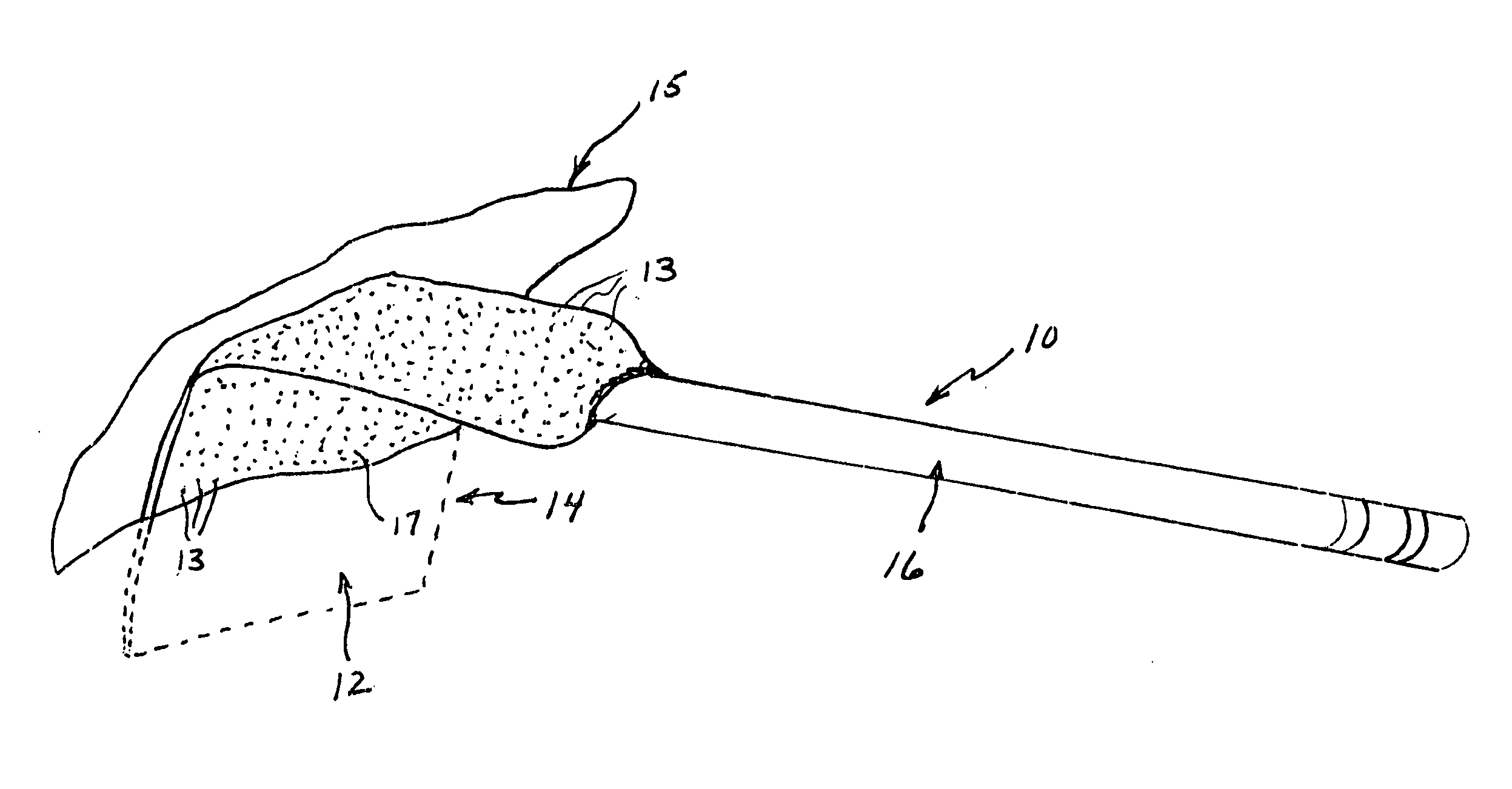Bacteria resistant coating for surgical instrument
a surgical instrument and antimicrobial technology, applied in the field of antimicrobial coatings on surgical instruments, can solve the problems of not showing an antibiotic effect for a prolonged period of time, reducing the release rate of silver ions from the product, and a substantial morbidity and mortality rate of hospitalized patients. , to achieve the effect of reducing infection
- Summary
- Abstract
- Description
- Claims
- Application Information
AI Technical Summary
Benefits of technology
Problems solved by technology
Method used
Image
Examples
Embodiment Construction
[0022] A surgical retractor generally indicated at 10 in FIG. 1 includes an anti-microbial coating 12 of the present invention on blade 14. The anti-microbial coating includes anti-microbial particles 13 within an autoclavable polymeric matrix 17. The surgical retractor further includes a handle 16 to which the blade 14 is attached. The blade 14 is that portion of the surgical retractor that is inserted into an incision site 15 for retaining tissue to provide the surgeon access for performing the surgery.
[0023] Infections are a reoccurring problem during surgery. Retractors and other surgical instruments used in surgery are, of course, sterilized to reduce or eliminate bacterial infection. However, infections still occur occasionally. Whether the cause or source of such infections are the surgical instruments or other factors is not known. The anti-microbial coating of the present invention is intended to eliminate, reduce or inhibit bacterial growth on surfaces of the surgical ins...
PUM
 Login to View More
Login to View More Abstract
Description
Claims
Application Information
 Login to View More
Login to View More - R&D
- Intellectual Property
- Life Sciences
- Materials
- Tech Scout
- Unparalleled Data Quality
- Higher Quality Content
- 60% Fewer Hallucinations
Browse by: Latest US Patents, China's latest patents, Technical Efficacy Thesaurus, Application Domain, Technology Topic, Popular Technical Reports.
© 2025 PatSnap. All rights reserved.Legal|Privacy policy|Modern Slavery Act Transparency Statement|Sitemap|About US| Contact US: help@patsnap.com


